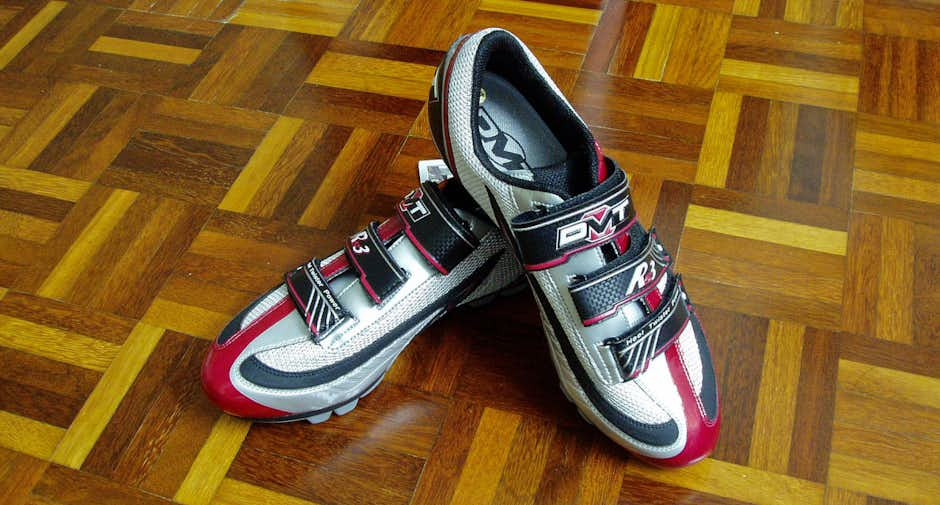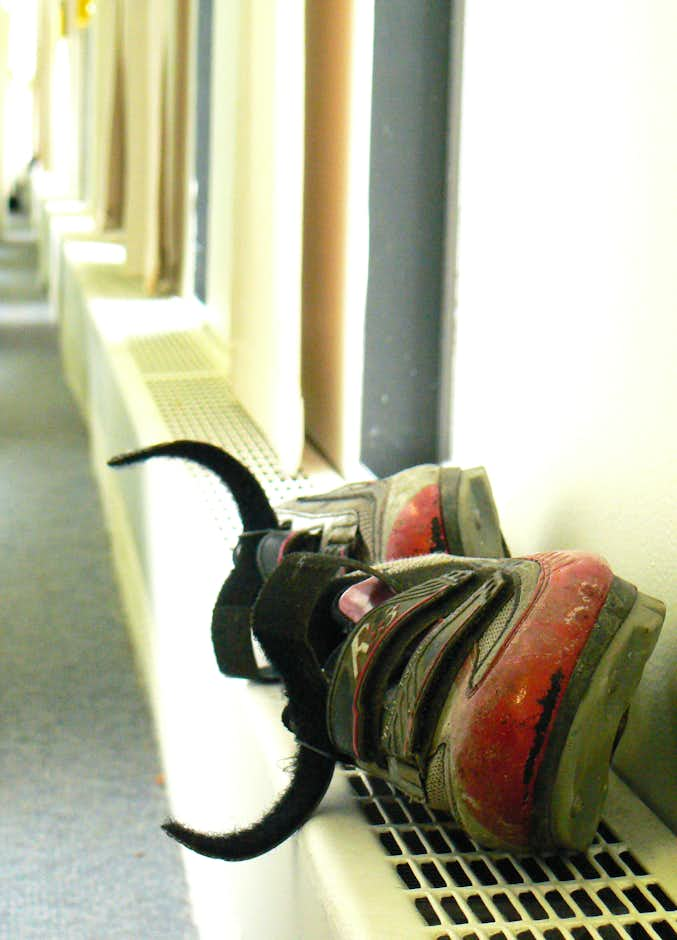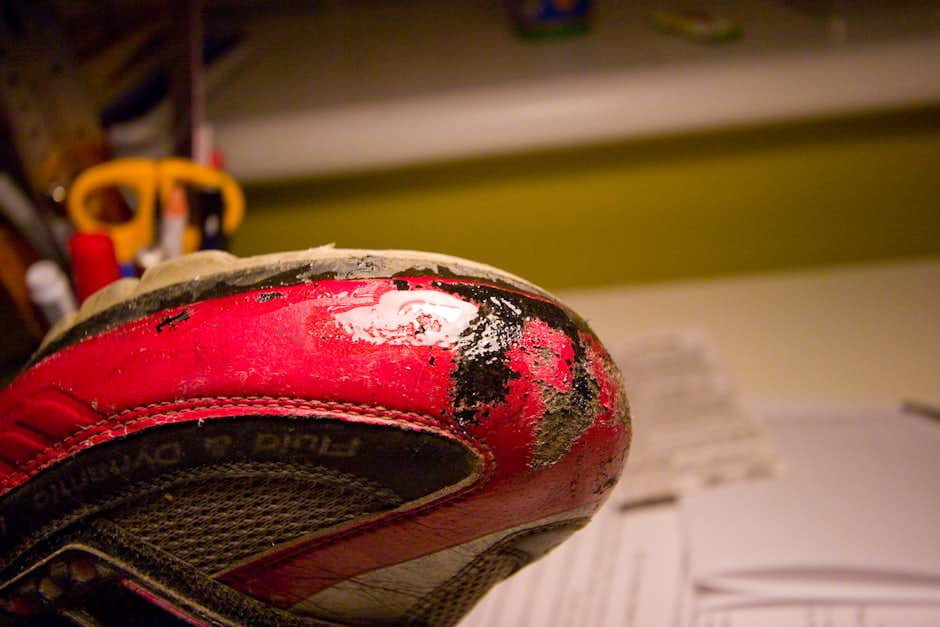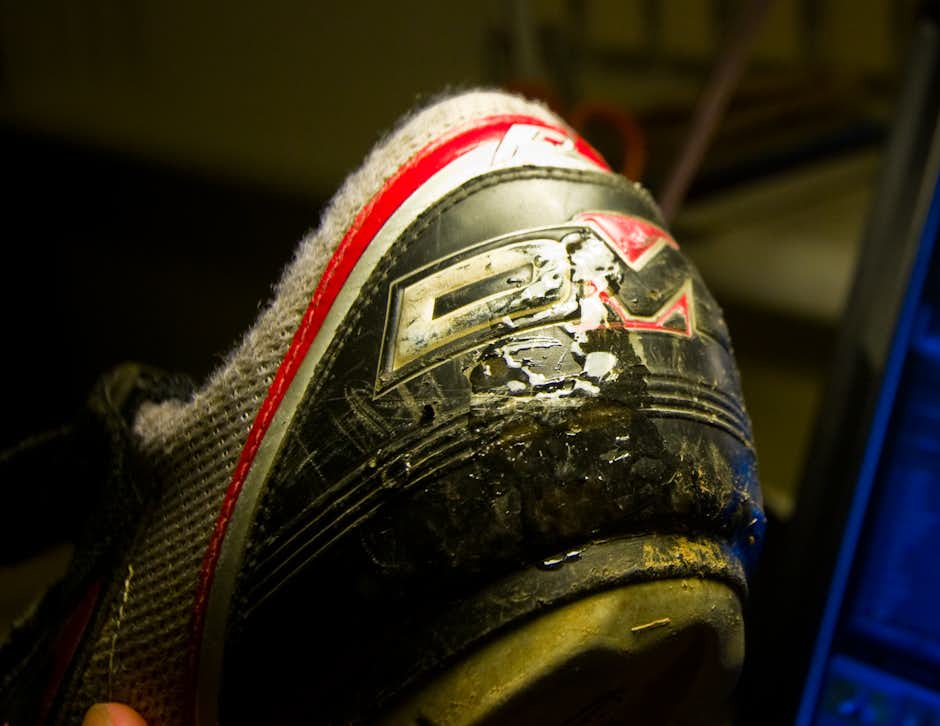Where the body meets the machine
Posted on November 3, 2008

I bought a pair of DMT RS3 cycling shoes when I was in a 3 month summer vacation in Malaysia back in 2004. Specialized cycling shoes help a lot to keep the feet properly aligned to the pedals and have stiff soles to reduce the flex on the feet. They hook onto the pedals so you get to use an additional muscle group by "pulling" the pedals.
But it wasn't until the spring of 2006 that I actually started wearing them. The bike I rode did not have a standard crank, which means I could not screw matching pedals onto the crank. At 1/2" in diameter, there were no compatible pedals in the market that could screw in. They were 9/16" to 1/2" adaptors available, but they cost too much.
After getting a used road bike, I hurriedly installed the pedals and started cycling in these shoes from day one.

What a difference it made.
Before, with sneakers, the shoe bent when I exerted force. The shoes would slip off the pedals if I wasn't careful. The crank's rotation depended entirely on the downward forces. A pair of cycling shoes changed all that.
The general consensus I felt from the research I did on the Internet was to practise clipping on and off on a grass field first. Even for seasoned clipless pedal users, falling off the bike because the foot couldn't get out soon enough at a stop can happen, often embarrassingly. I intentionally left the clip tension loose, allowing me to clip on and off with ease.
I still keep them at the same tension today. I find the ease to be forgettably convenient, yet it prevented the shoes from clipping out too easily.
Cycling shoes can be categorized into 3 types. There are road cycling shoes - lightweight and built with unrecessed cleats. The metal block that clips onto the pedals sticks out under. They make the signature "click clack, click clack" sounds when walking on a hard surface, and can actually be slippery. Mountain bike cycling shoes have recessed cleats making walking more convenient, but their designs are too flashy for everyday use. Then there are the commuter class shoes that looks like normal shoes, but still possess hard soles and cleats.
Commuter shoes would've fit my use perfectly, but I didn't know about them at the time of purchase...

I put the shoes to good use. I wore it everywhere, at any weather. Below, they were soaked after a winter ride. I left them to dry on a set of heating vents.

I did get a pair of shoe covers (from Pearl Izumi) to combat water. They helped a lot, but were very difficult to put on and easy to break. The rubber bottom started to tear after a few months of use. It wasn't long before I tossed them out.

A few thousand kilometres on, the shoe itself showed signs of wear.


Epoxy, a familiar friend, came to the rescue.

Normally used as a bonding compound, epoxy forms essentially a layer of plastic when cured. It is ideal for repairs like this because the shoe needed protection to prevent layers from further disintegration.

After a week, the epoxy held up well.

There is a crack on the epoxy, which is expected since it is sitting on a flexible layer. It shouldn't be a problem as the crack isn't over an area that needed protection.

For future repairs, I would separate the epoxy compond into smaller areas; much like putting gaps on rail tracks to mitigate the effect heat variance has on the expansion and contraction on metals.
Why didn't I just buy another pair of shoes? First, a syringe of epoxy cost me only $6.95, a tenth the price of a good pair of shoes. Second, shopping for a pair of shoes is just too much of a hassle. It's not easy to choose the right size even though all manufacturers use standard sizing.
Most importantly, a pair of old shoes are just too comfortable. You know exactly where it is tight and loose, how cold it is before your shoes can't keep you warm, and how careful you must walk on its slippery bottoms. A pair of old shoes need no introductions.
Oh, by the way: Ladies and gentlemen, meet my best buddy.